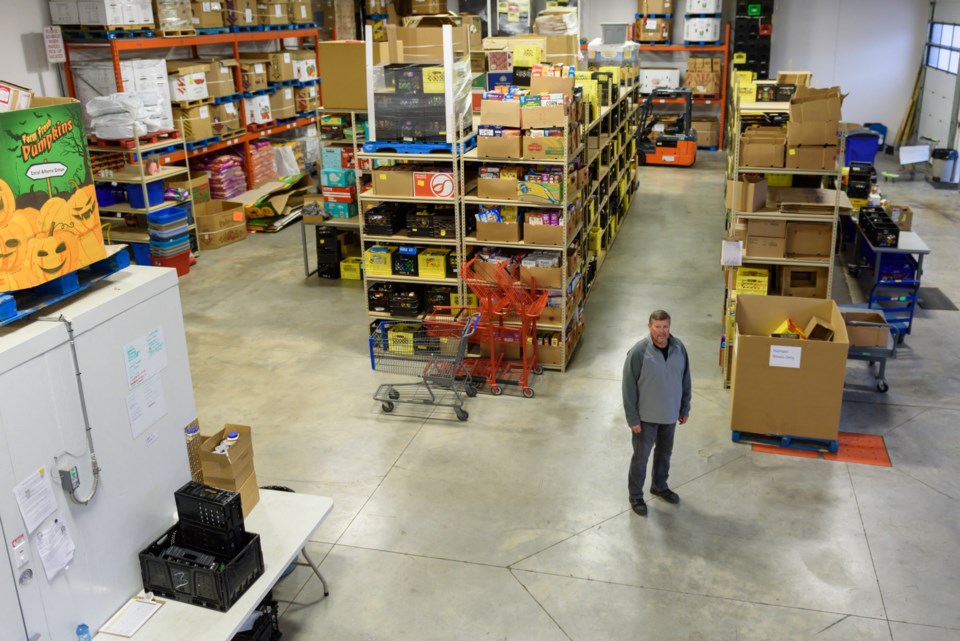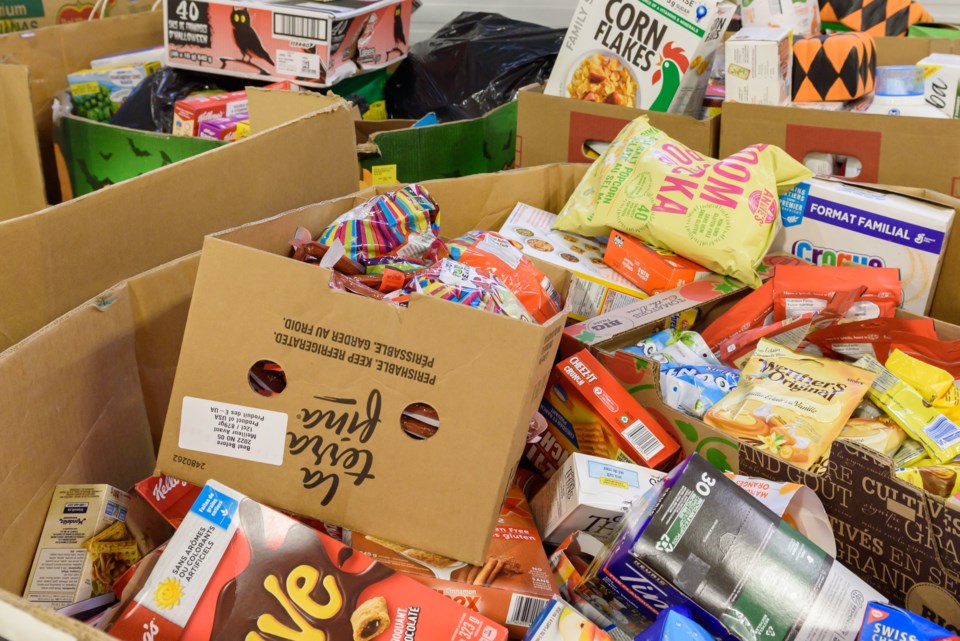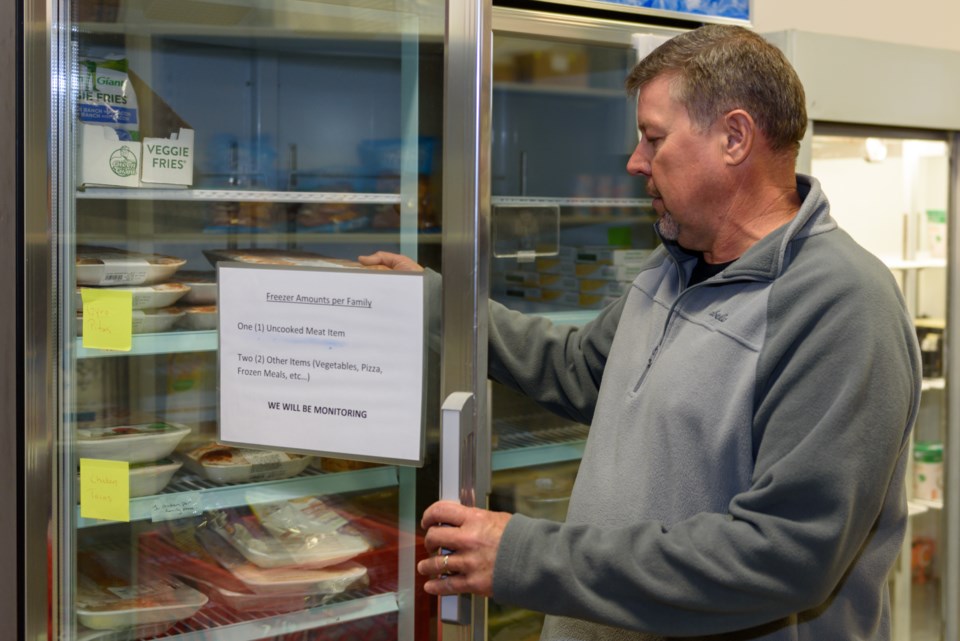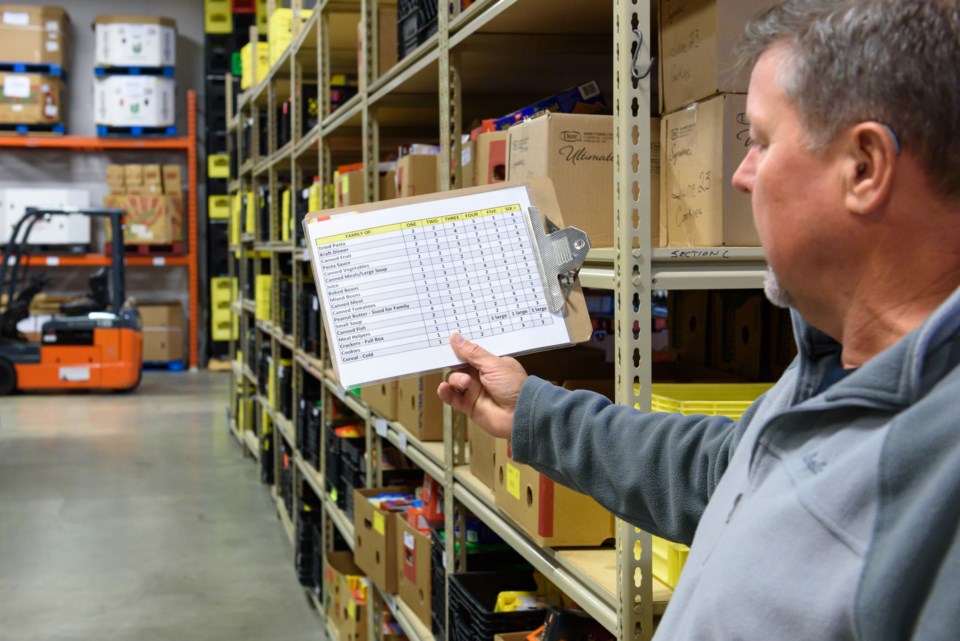Being in the background suits Carl Kennedy just fine.
A veteran of Alberta’s oil and gas industry, Kennedy began working as the logistics co-ordinator at the Okotoks Food Bank about two and a half years ago.
"I'm not the frontline person,” he said. “I'm in the background, and (I) make sure that we have stuff available for our clients, and for our frontline workers to get that out to the clients.”
When his hours in the oil patch were cut in half due to the COVID-19 pandemic, Kennedy began a part-time job in warehousing and logistics at the food bank.
With a rapid increase in demand at the food bank, his part-time position quickly grew to become full-time. With over 30 years of experience in oil and gas, and a background in mechanical engineering and project management, Kennedy has been able to find efficiencies and help the food bank grow to meet that increasing demand.
"I can’t take a step back from this position, it’s too much fun and too fulfilling,” he said.
He continues to work both jobs, keeping full-time hours at the food bank.
When he joined the team at the food bank, it had just moved into its present location on Stockton Avenue. Somebody with warehouse experience was needed, which is how Kennedy stepped into the job.

There has been a huge increase in demand at the food bank since Kennedy started, and it is expected to keep rising.
Demand for hampers is up 32 per cent and demand for help-yourself service has increased by 91 per cent since 2021.
“A lot of it was obviously COVID affecting quite a few people,” Kennedy said of the increase in demand. He felt it himself, as did many in the oil and gas industry, although the pandemic’s effects were felt well beyond the oil patch, he said.
“It was everyday people, right? You know, single moms, waitresses. Anybody that was working in a restaurant, they were totally shut down.”
Food is one thing that people cannot put off and people of all walks of life use the food bank.
Anybody could be at home watching TV, not realizing that a neighbour is suffering, he said.
“At the end of the day, people still have to eat every day,” he said.
As logistics co-ordinator, Kennedy’s job is to make sure there is enough food on the shelves so staff and volunteers can work their magic and get it into the hands of clients.
Much of the job involves communicating with donors and suppliers.
The Okotoks Food Bank does not exist in a bubble, part of a vast network with many moving parts.
“In the logistics game, it's a network, right? We need to know who to call if we need something, or if there's a shortage or an overage of something.”
Kennedy co-ordinates with area food banks, donors and other organizations on a daily basis.

The Okotoks Food Bank is a distribution hub for food banks in southern Alberta, covering an area from Tsuu Tina Nation to the north, Fort Macleod to the south, Eden Valley to the west and Vulcan to the east.
Kennedy talks regularly with the Calgary Food Bank, for example, which often gets large donations of fresh produce and then works to distribute them.
“Fresh produce has to move super-fast,” Kennedy said, “we all work together.”
To cut down on waste, he spearheaded a program where expired or damaged food is given to farmers as animal feed. Pig farmers will take dented cans, feed the contents to their animals, and then recycle the cans, Kennedy said, keeping a lot of waste out of the landfill and lowering feed costs for farmers.
In return, the farmers give meat to the food bank to distribute.
“It keeps the food out of the landfill, keeps it going to people that would need it,” he said. “It's a big cycle.”
To meet the anticipated growth in demand, one of the first tasks when Kennedy was brought on was to find efficiencies and make things as easy as possible for volunteers. Food initially stored in milk crates was moved to pallet boxes.
"We knew we were going to start massively moving more food,” he said. The challenge was to build capacity to be able to handle the increase in food coming into and going out of the food bank.
The food bank also got its own delivery truck and can now access more food and get to different clients or suppliers.
Kennedy can pick up as many as six pallets of food at a time and get it ready for distribution.
Along with the truck came the need for a forklift. The food bank used an order-picker for a while, but with funds raised from last year’s Christmas concert, it was able to buy a brand-new forklift. The annual Christmas concert is one of the biggest fundraisers for the food bank.
“Because now we have tractor-trailer loads showing up,” he said. “So now that allows us to do pretty much carte blanche for, you know, access to large quantities of food.”
The prediction is that food bank demand will increase exponentially over the next five to seven years, he said.
Working in the background, Kennedy helps facilitate things for volunteers, who carry out most of the sorting and other work that makes the food bank function. About 200 volunteers help at the food bank, and they are supported by five full-time staff members.
For Kennedy, a typical day starts at 7 a.m. with a set schedule of pick-ups from different donors or grocery stores around town.
“We’re jumping into our van and doing those pick-ups early in the morning,” he said. The plan is to have donated food in the building and ready at 9 a.m., when volunteers arrive.
In Q1 of 2021, about 60,000 pounds of food came into the food bank from corporate donors like grocery stores or trucking companies. A year-and-a-half later, in Q3 of this year, that number jumped to 90,000 pounds, not including donations from individuals.
Hutterite colonies make up another large group of donors.
“The Hutterite colonies around here are pretty awesome,” he said. “They make a big difference.”
After morning pick-ups, Kennedy finds out what else is going on that day. Other food banks might call and say ‘we have this available’ or ask if anything is needed.
“The phone might ring, and it’ll be Calgary Food Bank saying, hey, we have 3,000 pounds of food available, can you come in and grab it?”
“No two days are ever the same here, which is good.”
Once donations arrive at the food bank, they are weighed and processed before being put away.
“And that’s where we have some really good volunteers,” he said. “We like to think we’re pretty efficient on moving stuff through.”

Thanks to inventory and tracking systems, Kennedy knows how much food is in stock and where it is at any given time.
“We know a pallet box will hold roughly 1,100 pounds of food,” he said. “I think I'm sitting right now, probably over 30 pallet boxes of stuff, but we know exactly what's in there at any given time.”
If another food bank calls looking for something he can say, I've got 500 cans of it, how many do you want?
The inventory system came out of a bit of thought process, talking with other food banks, and being open to input from volunteers.
“It’s always interesting to make it more efficient (and) make it more easier for volunteers to process the food.”
The goal is to handle food minimally and to maximize efficiency. Rather than moving something five or six times, it is handled one to three times.
“We’re pretty proud of what we’ve created,” he said. “This job is really a cool sense of fulfillment.”
Teams of volunteers do different jobs throughout the day. Some sort food that has come in, while others build hampers.
The hampers are put together specifically for clients, according to dietary restrictions or other needs, such as baby supplies or Christmas decorations.
Working at the food bank has not only opened his eyes to the level of need in the area, but also to how the community steps up.
One of Kennedy’s favourite parts of the job is seeing the public involvement and support for the food bank.
“Our community really has stepped up and become a huge donor to us,” he said.
For more information about the Okotoks Food Bank, visit okotoksfoodbank.ca.




